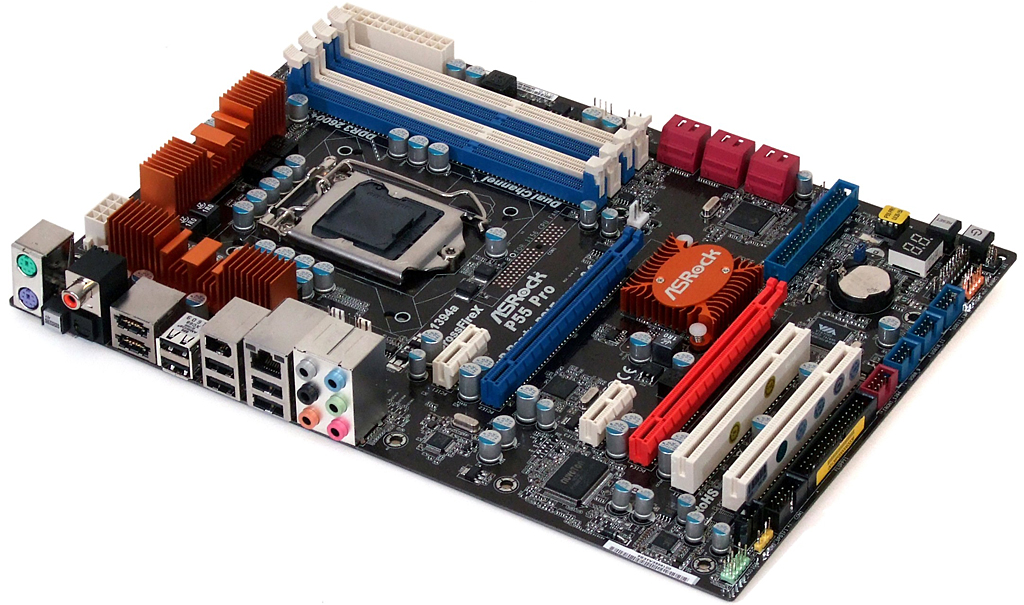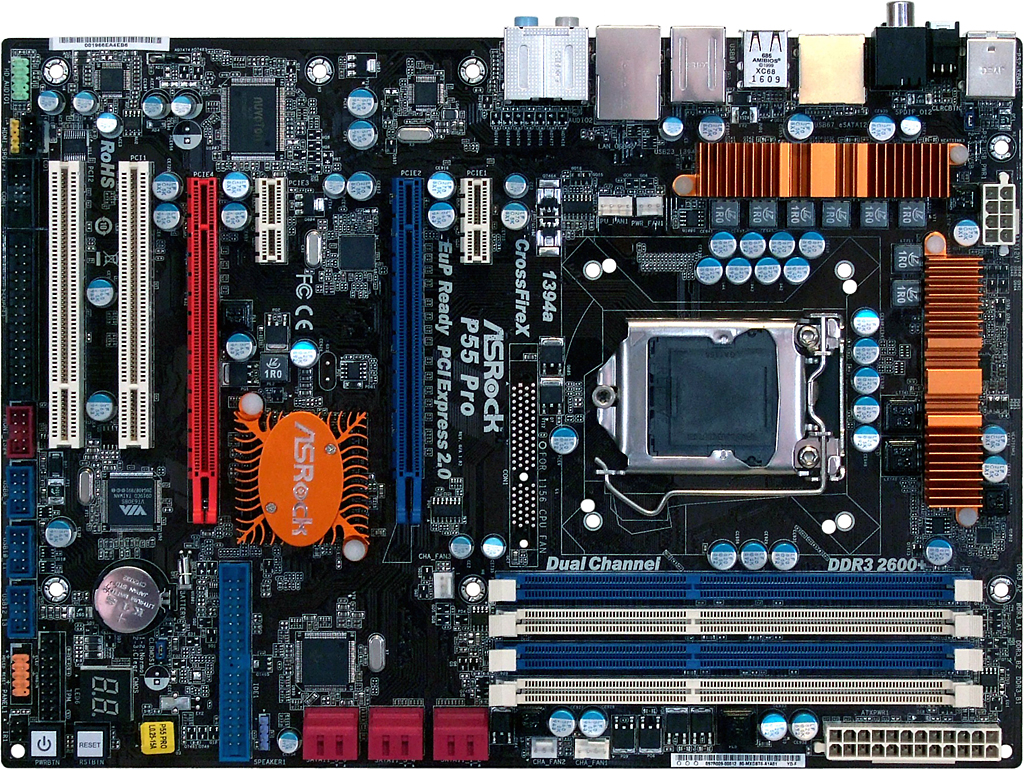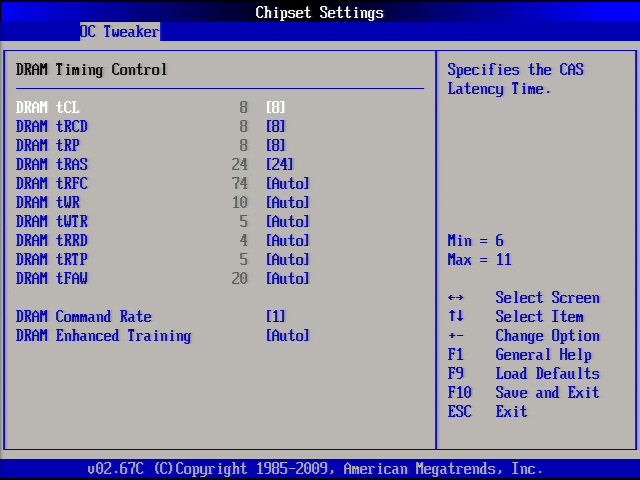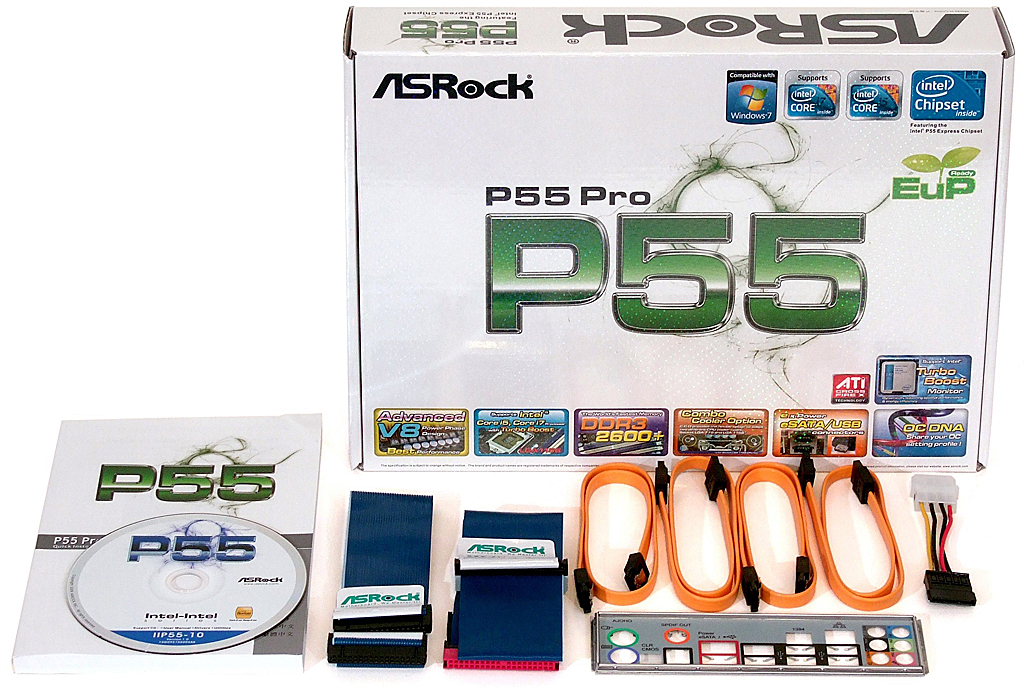P55 On A Budget: Five Core i5/i7 Motherboards For $100-$150
ASRock P55 Pro
For a mere $115, ASRock endows its P55 Pro with many of the features we expect to see on boards that are 30% more expensive, such as FireWire, dual eSATA, dual-format digital audio outputs, and a handy I/O panel CLR_CMOS button. Other enthusiast-friendly features include internal power and reset buttons and a Port 80 diagnostics display.
ASRock even spreads its six expansion slots across the standard seven positions, only leaving vacant the slot beneath the upper graphics card, a slot normally occupied by over-sized graphics cards that is otherwise left empty to assist GPU cooling. That means the six slots most people would potentially use are all available, providing two PCIe x1 and two legacy PCI interfaces.
The company moves forward while sacrificing none of its legendary backward-compatibility features, providing the floppy interface many Windows XP users need for RAID drivers, an Ultra ATA controller for legacy IDE devices, and a set of LGA 775 CPU cooler mounting holes. This makes this motherboard, in combination with a new CPU and RAM, a drop-in upgrade for the Core 2-based systems that so many budget-restricted performance enthusiasts still own. On the other hand, PCIe 2.0 x4 mode provided to the second x16-length slot through the P55 PCH leaves users of high-end CrossFire configurations in the cold.
Of course, the design isn’t perfect. Potential issues include a circuit board that’s around an inch short of reaching a third row of standoffs, something builders will notice immediately when trying to insert RAM into the forward-most DIMM slot. That crowding might be responsible for other nagging issues, such as a front-panel audio header in the bottom-rear corner and a floppy connector shoved beneath the lowest expansion slot. And while forward-facing SATA ports fit nicely under graphics cards, longer cards will hang past these far enough to make cable installation or removal difficult.
BIOS
ASRock’s OC Tweaker menu has all of the overclock settings most performance enthusiasts need, but few of the elaborate controls often used to gain an edge in overclocking competitions.
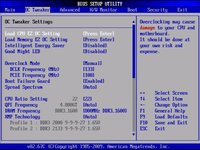
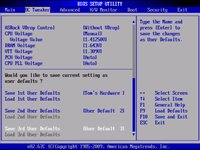
Vcore, Uncore, and DRAM voltage ceilings all exceed conventional safety levels, which is perfect for show-offs who don’t care how long their processors last. ASRock also includes voltage droop override to maintain consistent output during high CPU loads.
Get Tom's Hardware's best news and in-depth reviews, straight to your inbox.
We chose “easy” timings for our benchmarks, though the P55 Pro is capable of latencies as low as 6-3-3-9.
Accessories
A low price makes the inclusion of only four SATA cables acceptable, and these are the better-quality “latched” variety. Windows XP users who still need a floppy for installing RAID drives will also appreciate the included ribbon cable.
